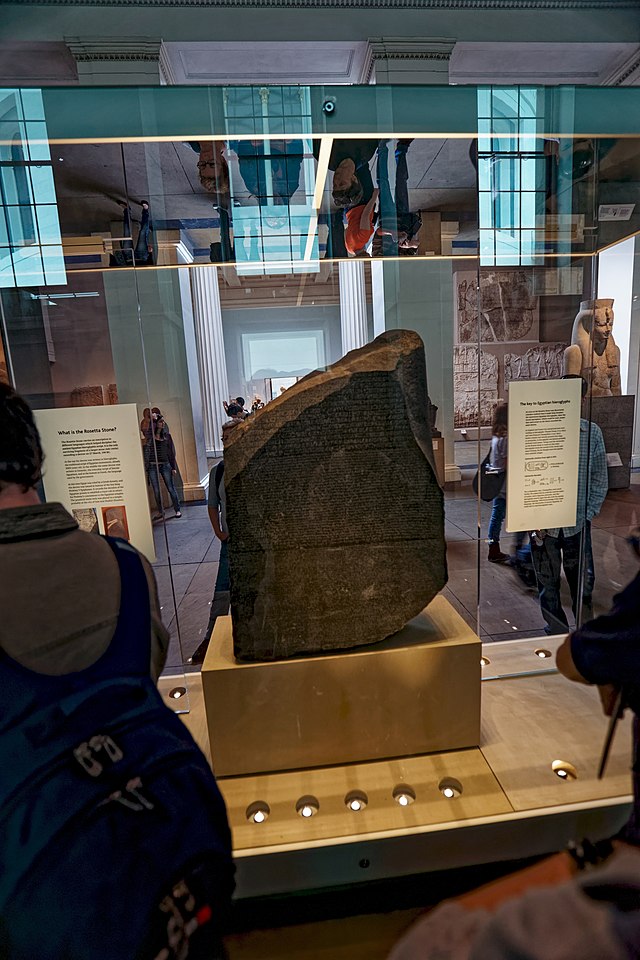On July 15, 1799, during Napoleon Bonaparte’s military campaign in Egypt, a French soldier stumbled across a huge black stone with ancient writing near the town of Rosetta, about 35 miles east of Alexandria. Made of black basalt with the writing of an ancient decree in three different languages, the Rosetta Stone has changed our understanding of the past.
The Rosetta Stone itself dates back to 196 BCE and bears inscriptions in three scripts: hieroglyphic, demotic, and Greek. At the time of its creation, Egypt was under the rule of the Ptolemaic dynasty, and the stone was commissioned to honor King Ptolemy V. Each script on the stone contained the same message, which essentially served as a decree from the priests of Egypt affirming their loyalty to the king.
For centuries, hieroglyphs had been an enigma to scholars, and the Rosetta Stone presented a remarkable opportunity for decipherment. That’s where the importance of the Rosetta Stone comes in. The British Museum, where the Rosetta Stone is on display, explains: “Soon after the end of the 4th century AD, when hieroglyphs had gone out of use, the knowledge of how to read and write them disappeared. In the early years of the 19th century, scholars were able to use the Greek inscription on this stone as the key to decipher them. Thomas Young(Opens in new window) (1773–1829), an English physicist, was one of the first to show that some of the hieroglyphs on the Rosetta Stone wrote the sounds of a royal name, that of Ptolemy.
The French scholar Jean-François Champollion(Opens in new window) (1790–1832) then realised that hieroglyphs recorded the sound of the Egyptian language. This laid the foundations of our knowledge of ancient Egyptian language and culture. Champollion made a crucial step in understanding ancient Egyptian writing when he identified the hieroglyphs that were used to write the names of non-Egyptian rulers. He announced his discovery, which had been based on analysis of the Rosetta Stone and other texts, in a paper at the Academie des Inscriptions et Belles Lettres(Opens in new window) at Paris on Friday September 27 1822. The audience included his English rival Thomas Young, who was also trying to decipher Egyptian hieroglyphs.
Champollion inscribed this copy of the published paper (see image ‘Tableau de Signes Phonétiques’) with alphabetic hieroglyphs meaning ‘à mon ami Dubois’ (‘to my friend Dubois’). Champollion then made a second crucial breakthrough, realising that the alphabetic signs were used not only for foreign names, but also for Egyptian names. Together with his knowledge of the Coptic language(Opens in new window), which derived from ancient Egyptian, this allowed him to begin reading hieroglyphic inscriptions fully.”
The decipherment of the Rosetta Stone and the subsequent decipherment of other Egyptian texts sparked an Egyptomania in the 19th century, with scholars and adventurers flocking to Egypt in search of further knowledge. The stone itself became an iconic symbol of the fascination with ancient Egypt and its mysterious hieroglyphs.
Today, the Rosetta Stone holds great significance as a testament to human curiosity and the power of decipherment. It is displayed in the British Museum in London, where it continues to inspire visitors and researchers alike. The stone’s legacy goes far beyond its physical form, as it represents a crucial milestone in the understanding of ancient civilizations and the importance of preserving and decoding their written records.






